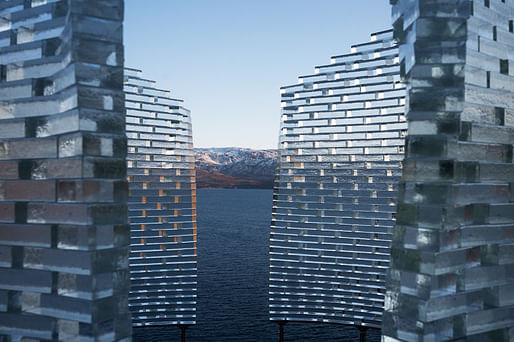
A recent project designed and built by Swedish architect Konstantin Ikonomidis located within a UNESCO World Heritage site in Greenland celebrates Inuit cultural heritage and traditional knowledge of the environment.
Called the Qaammat pavilion, the structure is situated in Sarafannguit, a cultural landscape in West Greenland and a World Heritage site since 2018. It was developed in cooperation with UNESCO, the Qeqqata Municipality, and the Sisimiut Museum.
The pavilion’s location is defined by the two fjords that meet on Sarfannguit’s eastern tip on the hills. This was carefully chosen by the local community, site manager Paninnguaq Fleischer-Lyberth and Ikonomidis. The installation will serve as a landmark and gathering space where the World Heritage site’s surroundings can be experienced by locals and visitors.
As per the architect's project description: “The Qaammat pavilion is designed as a poetic and aesthetic object, but most importantly, as a symbolic gesture acknowledging the natural site and rich history, the distinctiveness of the Greenlandic culture, and the spiritual sensibilities rooted in Sarfannguit.”
The pavilion’s foundation was constructed with rock anchors in the same way that typical houses in the region are, drilled into the ground with approximately 1.6-inch holes. Attached to the upper part of the structure’s metal poles is a custom-made stainless steel bracket with a circular geometry. The metal bar is horizontal and the poles vary in length according to the terrain.
The installation’s curving walls are composed of glass blocks, which form a linear pathway open at both ends. This forms the pavilion’s most distinctive feature, its glass “shell,” providing the effect of altering viewers’ perspectives and merging with the surrounding environment.

The Qaammat pavilion’s design takes inspiration from the moon and the Arctic light, along with the snow’s reflections. Through extensive site-specific research, Ikonomidis focused on integrating landscape, culture, and human stories into the design. His intention was to manifest the experiences, stories, and myths collected through the encounters and conversations he had with locals in the design of the pavilion.
Are you sure you want to block this user and hide all related comments throughout the site?
No Comments
Archinect
This is your first comment on Archinect. Your comment will be visible once approved.